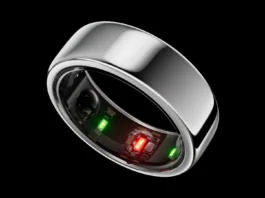In an unexpected turn of events, Apple has decided to halt its ambitious microLED display technology project. This decision has stirred the tech industry, given the potential microLED had to revolutionize display technology with its superior brightness, color accuracy, and energy efficiency compared to current OLED displays.
Key Highlights:
- Apple had invested over $2.6 billion in microLED technology, aiming to launch its first microLED-powered device, likely a smartwatch, by 2026.
- Technical challenges, particularly in mass transfer processes, and unsatisfactory yields in pilot production lines, were significant hurdles.
- The cost and performance comparison with evolving OLED technology showed diminishing advantages for microLED, making its high production cost harder to justify.
- Apple’s discontinuation impacts its partners, notably ams-OSRAM, leading to a non-cash impairment of EUR 600 to 900 million due to the project’s cancellation.
- The industry anticipates potential shifts in microLED development focus, with other applications and companies possibly filling the gap left by Apple.
Analysis:
Apple’s pivot away from microLED technology underscores the immense challenges of pioneering new display technologies. Despite substantial investments and progress, the cost and technical barriers, combined with the rapid advancements in OLED technology, made it difficult for microLED to present a clear advantage in the consumer market. Notably, Apple’s foray into microLED was not merely about enhancing display quality but also aimed at reducing dependency on external suppliers and asserting control over its supply chain.
For ams-OSRAM and other Apple partners, this decision has immediate financial repercussions but also opens new avenues. ams-OSRAM, for instance, possesses extensive expertise in microLED technology that could serve other applications or industries beyond consumer electronics, such as automotive or augmented reality. The broader industry impact remains mixed, with microLED still holding potential in niche markets that require its unique advantages.
Technical and Financial Challenges:
The core challenges that led to Apple’s decision to pause its microLED project revolve around the complexities of manufacturing and the economic viability of the technology. High production costs and technical barriers in key processes, such as mass transfer, have been significant hurdles. These challenges are not trivial; they underscore the difficulty of innovating in the high-stakes domain of display technology, where every improvement must be scalable and cost-effective to be viable for mass-market products.
Impact on Industry Partners:
For partners like ams-OSRAM, Apple’s decision represents a substantial financial hit but also a strategic inflection point. While immediate financial implications include a notable non-cash impairment, the longer-term outlook might involve leveraging the acquired microLED expertise in other domains or for other customers. This expertise remains valuable and could play a critical role in niche applications where microLED technology’s unique benefits are indispensable.
Shifts in the Display Technology Landscape:
With Apple’s redirection, the display technology landscape is poised for a reshuffling of priorities. Other players in the industry might see this as an opportunity to explore or double down on microLED technology in specific applications where its advantages over OLED and other technologies are most pronounced. This could lead to a diversification of the microLED ecosystem, with innovations and applications tailored to sectors like automotive, industrial, and high-end consumer electronics.
The Future of Display Technology:
With Apple stepping back, the microLED industry is at a crossroads. Focus may shift to applications where microLED can significantly outperform existing technologies, such as in high-end automotive displays or augmented reality devices. Meanwhile, OLED technology’s ongoing improvements and cost reductions continue to set high standards for display performance and efficiency.
This development is a reminder of the unpredictable nature of technological innovation, where not all advancements reach commercialization despite significant potential and investment. The future of display technology remains bright, with continuous innovation driving the industry forward, albeit with some paths diverging from initial expectations.







